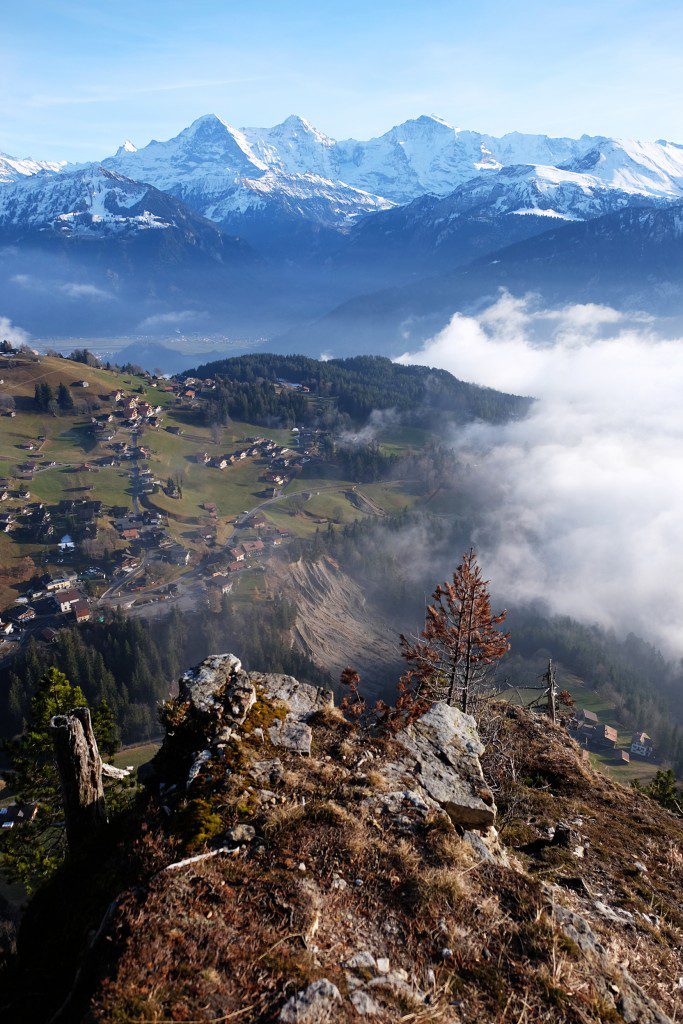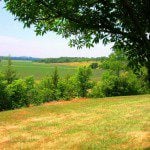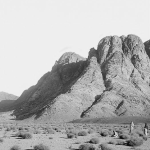
(Wikimedia Commons public domain)
If you want a place where the sun shines all day every day, you’ll probably get a desert.
Many years ago, an uncle came through Switzerland for a day or two. He visited Lucerne/Luzern.
Afterwards, he told me that he thought the Alps pretty, but not really as impressive as he had expected.
I happened to know that it had been raining and foggy the whole time he was in the country. And Luzern, while a pleasant little city situated on a stunningly beautiful lake, is only on the edge of the big mountains. At their beginning.
In other words, he hadn’t really seen the Alps.
I realize that it’s not always practicable but, where possible, if seeing the Alps is a high priority for you, you should allow as much time as you can for seeing them. The weather in the Alpine regions is wet, often cloudy and misty and rainy, and days can pass without the major peaks making an appearance.
For example, during the time that my wife and I were in Grindelwald earlier in June, the weather was unseasonably warm and the skies were pretty clear. Over the past three days, however, we haven’t seen any of the most important mountains at all.
That doesn’t mean that the area hasn’t been beautiful. It is, for example, breathtakingly green. (That’s what buckets of rain, supplemented by fog, can do for a place.) And it hasn’t been fully socked in. Rather, clouds have come and gone, and mist has risen and settled and risen again — rather in the manner of one of those traditional Chinese landscape paintings, with the mountains mystically wreathed in cloud. The peaks have never fully appeared, but their bases have been massively evident, and there have been tantalizing glimpses. And we’ve had a place with a stunning view.
But I’ve watched some of the tourists walking up and down the streets of Grindelwald and Lauterbrunnen, peering upward for a fleeting view of the Alpine titans, forlornly taking selfies against banks of fog. Most of them, I’m guessing, will have had only one night or a couple of nights in the Berner Oberland — a very large percentage of the current tourists are Chinese; I don’t imagine that they’ll come to Switzerland very often during their lives — and I feel sorry for them. The glory of the Alps is unforgettable, once it’s been seen. What a shame to come and miss it.
So the first tip is, if you can, to allow several days in the Berner Oberland. If the mountains are cloud-bedecked, the country below them is still gorgeous. There is still good hiking. You might go to Trümmelbach Falls, actually located inside the mountain. Bern is a pleasant city, with a nice cathedral alongside a spectacular river view and various other sights (including some Einstein-related locations). For Mormons, the temple in Zollikofen is available. And there are Fondue and Rösti and Raclette and Wienerschnitzel and Züri Geschnetzeltes and Bratwurst and Apfelschorle and Chäsechüechli (!) and scores of varieties of cheese and chocolate to be sampled. And maybe a yodeling festival or something of that sort. Or try paragliding!
And the second tip is to not give up hope even if things seem to be fogged in. Sometimes, even when it’s cloudy in the lowlands, the peaks of the Alps will be bathed in brilliantly clear sunlight. You need to ask. These things are changeable. Often, in fact, train stations and hotels will have television screens connected to cameras high up, so that you can see what things look like there. To be atop or near a peak and to look across what the Swiss call Nebelmeer (“a sea of fog”) to other peaks soaring above it like islands is a wonderfully memorable sight.
My third tip? All seasons in Switzerland are wonderful, because Switzerland is wonderful. But the weather in the Alps is probably at its clearest from late August into mid-October or so.
Posted from Zürich, Switzerland











